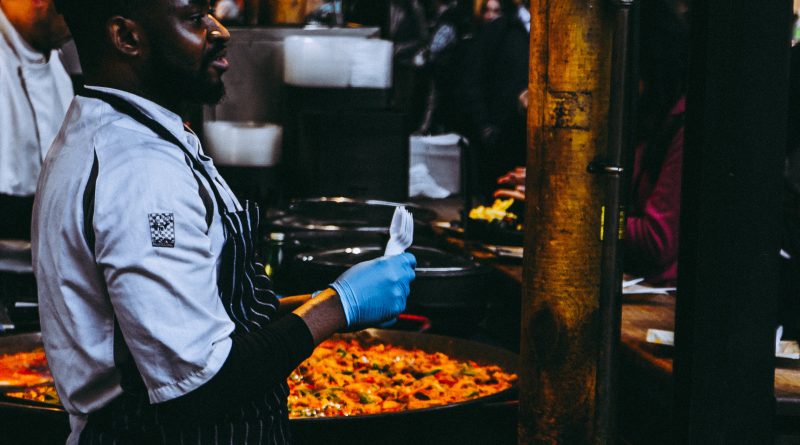Spanish Cuisine: 10 Delicious Typical Dishes You Must Try
Spanish gastronomy is incredibly rich and diverse, just like the country itself. With an extensive variety of top-quality ingredients to choose from, old traditional recipes are combined with more modern tastes to create new quality concepts. Spanish chefs and cooks possess an incredible level of cooking skills. It is no wonder that Spain is at the top of the list when it comes to European culinary excellence. Those who do not want to miss out on a trip to Spain should try as many of the following dishes typical of Spanish gastronomy.
It’s not easy to choose a few traditional dishes from a country that offers such a wonderful selection. With the limited scope of this article, it is even it’s even more complicated.
So our greatest recommendation is that you try any and everything that appeals to you, you are sure to be delightfully surprised!
TWO TIPS FOR EATING OUT IN SPAIN
Here are a couple of tips to save you some money when eating out:
1. Try to stay away from places mostly frequented by tourists.
2. Menu del dia – In Spain, the “menu of the day” is offered at many restaurants as the midday meal. Ordering a menu del dia is the most cost-effective way to eat out in Spain. This meal of generous proportions is offered for a set price. It usually includes pasta, soup or salad, bread, a main course, dessert, water, wine, and coffee. Usually, you will have at least two choices for each course.

TYPICAL SPANISH DISHES
Spanish cuisine is characterized by being rich, varied, straightforward and made with high-quality ingredients, and well accompanied by some of the world’s best wines.
PAELLA
Paella has undoubtedly become Spain’s most international dish, although the most famous rice in Spain has humble origins.
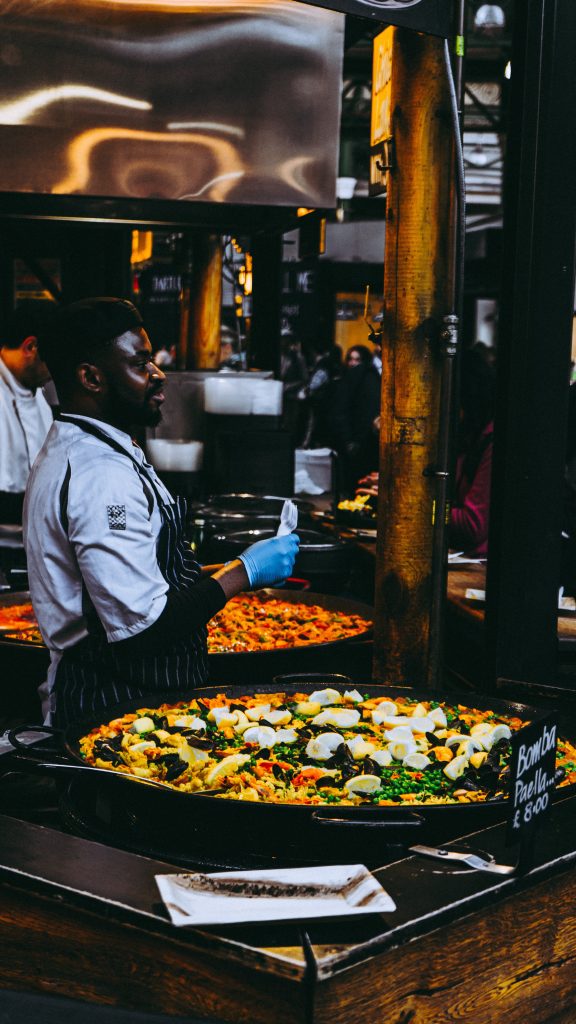
Paella’s name refers to the type of pan used to cook the dish, in Valencia, where it was developed thanks to the day laborers who mixed the food they had on hand; so traditionally rabbit, chicken, green beans, white beans, snails and all kinds of vegetables were thrown into the paellera.
Today, its growth in popularity has created other variants, and it is usually cooked in restaurants, with a sofrito base of onion, green peppers and tomato. Squid, clams, mussels, chicken, prawns, and perhaps some meat are then added, and finally, the rice is included and cooked slowly to attain the flavour of seafood.
A very similar recipe that you can also try is fideuá, with the same ingredients, but replacing the rice with thin pasta.
In Spain, you will find many types of rice cooked in various ways, and we recommend that you try as many as possible, especially the typical black rice of Madrid, which gets its colour thanks to the ink of the squid.
COCIDO MADRILEÑO
And we continue with another favorite dish, one frequently served in the capital, and indeed all over Spain, a good hearty stew. This dish is considered one of the attractions of Madrid.
This typical Spanish dish was intended for the lower classes originally, workers or farmers, who needed a meal full enough to withstand the hard work of the whole day, and one that could be cooked in a single pot.

Cocido Madrileño from La Bola Restaurant
These days the stew is often served with a first course of noodle soup or a broth resulting from cooking chickpeas with vegetables, usually, cabbage or green beans. Chicken or rabbit, morcillo (beef), bacon, chorizo, and sausage, are then served as a second course.
Without a doubt, this is a delicious meal that is cooked with small variations throughout the country, such as the typical mountain stew of Cantabria and many others. One hundred percent recommended!
FABADA ASTURIANA
Although it has its origins in Asturias, another dish that has spread and popularised widely throughout Spain is fabada. The dish consists of a stew of beans or beans with chorizo, black pudding, bacon, and pig’s ear.
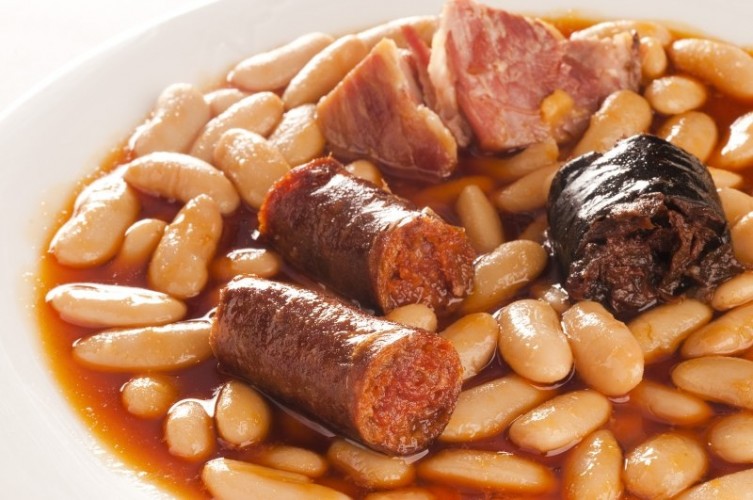
Its origin is uncertain, having several theories such as that it is a variant of the Caussolet of Languedoc or Midi Pyrénées that came to Spain through the French Camino de Santiago, being one of the most typical dishes of the gastronomy of France. Another theory is that it is a more modern recipe of the twentieth century invented in the cities, although there is evidence that fabes or beans were consumed in the area since the thirteenth century.
The Asturian pot is very similar to the French dish, with the difference that to the latter cabbage, potatoes, and other vegetables from the area are added. You can also find some delicious fabes with clams.
GAZPACHO AND SALMOREJO
Gazpacho is a cold soup of bread, water, olive oil, vinegar, tomato, cucumber, onion, garlic, and green pepper, delicious and refreshing to east during the summer months.

The history of gazpacho is uncertain, but it is believed that it must exist since the consumption of bread, as a way of making use of it, since it traditionally uses stale bread soaked in water, with added vinegar, oil, and salt.
Another variety is the thicker and simpler salmorejo, made with soaked bread, garlic, tomato, oil, vinegar, and salt, which is served with pieces of Serrano ham and boiled egg. Magnificent!
POTATO OMELETTE
Potato omelette is one of Spain’s star dishes; you’ll find it in every bar and restaurant in the country.

Its elaboration is simple since the potato is fried slowly in olive oil, with or without onion and salt. It’s then drained and mixed with the egg, to make an omelette.
Its origins date back to the year 1,798 in the village of Villanueva de la Serena in Badajoz, where two farming families, tried to find cheap food to alleviate the famine, and it is delicious!
HAKE IN SALSA VERDE
Hake in green sauce, also known as Basque hake, is a healthy dish very typical of Spanish cuisine and delicious.
Hake is one of the most consumed fish in Europe, very tender and with hardly any bones, which is prepared by letting it slowly cook in a fish broth, with garlic, parsley, clams, olive oil, and salt to taste.
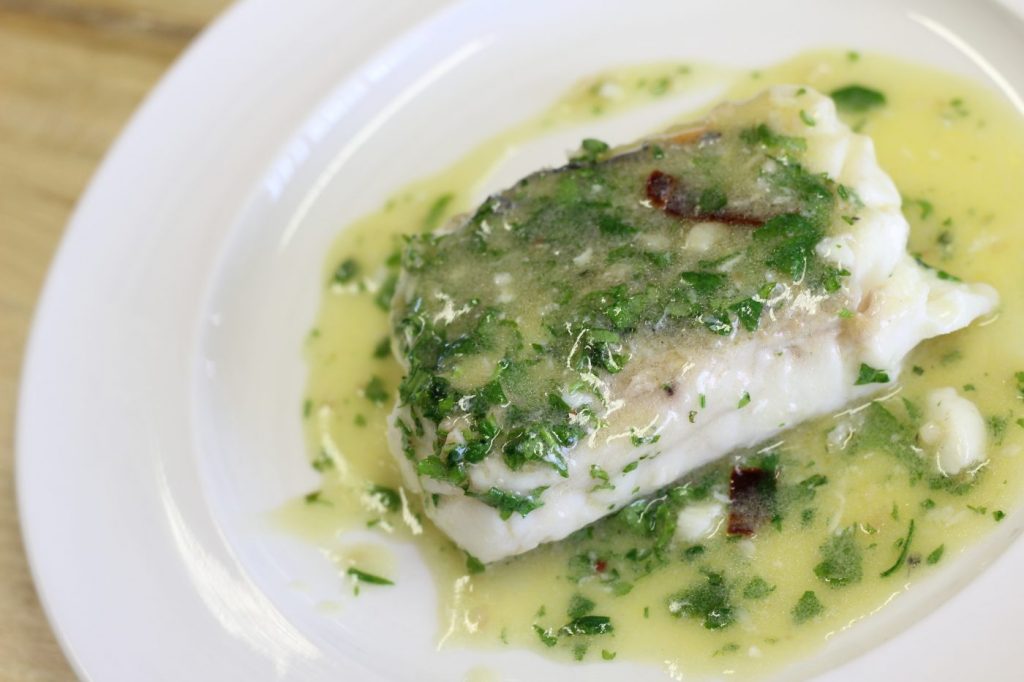
The 7,900 km of Spanish coastline where high-quality fish is caught makes Spain, together with Japan, one of the countries with the most fish consumption in the world. This means fish is a staple on just about any restaurant menu and easy to find. We also recommend that you also try cod, sardines, bream, and sea bass.
GARLIC PRAWNS
Rich garlic prawns are always an excellent choice and easy to find in bars and restaurants, cooked simply with olive oil, garlic, parsley, chili, and salt.
As with fish, seafood in Spain is abundant, and of excellent quality, so we advise you to try as many varieties as your time and budget allow.
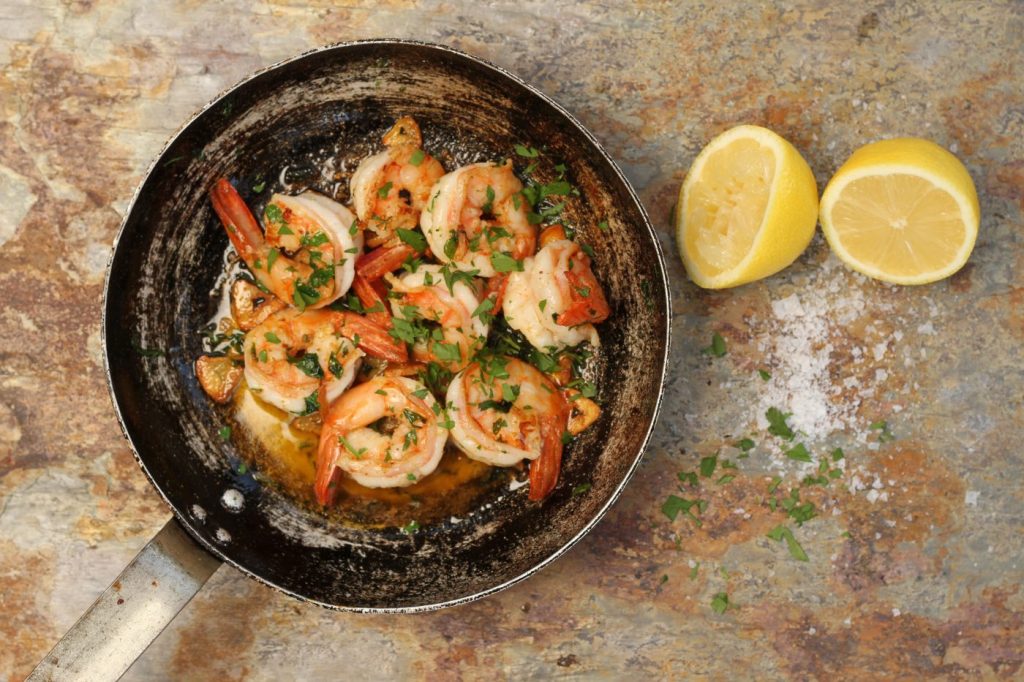
ROMAN SQUID AND FRIED FISH
Calamares a la Romana (battered in flour and fried), whether served on a plate or stuffed in a sandwich, are found all over Spain.
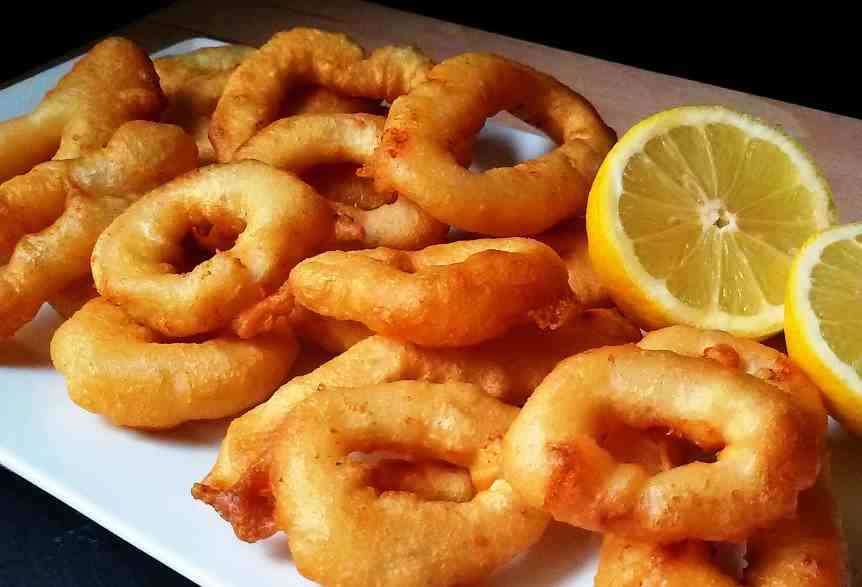
They are also usually included in fried fish frying trays, a mixture of small fishmonts, anchovies, poplars, etc., a dish known to come from the Sephardic Jewish cuisine that served it accompanied by a vinaigrette sauce.
CROQUETTES
Croquettes are the typical dish that each Spaniard is sure that his grandmother cooks it best!
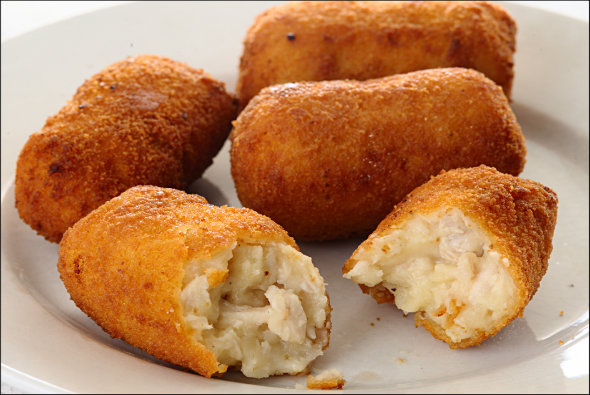
The traditional croquette recipe consisted of a bechamel (milk and flour) with Serrano ham and prawns, breaded with egg and breadcrumbs before frying. However, today they are made with various sweet and savory ingredients.
MIGAS EXTREMEÑAS
Spaniards like to eat bread with everything. That’s why many of their dishes are based on taking advantage of bread leftovers, as is the case with Extremaduran crumbs, a recipe widely consumed throughout Spain.

The recipe for Extremaduran crumbs consists of dipping the previous day’s bread with water, which is then fried with chorizo, bacon, green pepper, garlic, olive oil, paprika, and grapes. Depending on the area, they may be served with fried eggs or sardines.
Other recipes made with leftover bread include garlic soups, also known as Castilian soup, or Torrijas (French toast) eaten as a dessert, a dish very typical of Easter.
We hope you enjoy the Spanish gastronomy, with its tapas and atmosphere, always well accompanied by exquisite wines that give you great memories of a visit to Spain.

